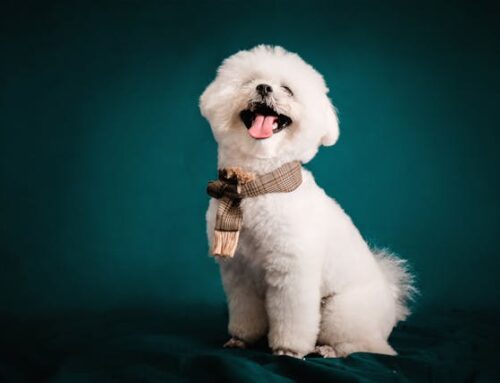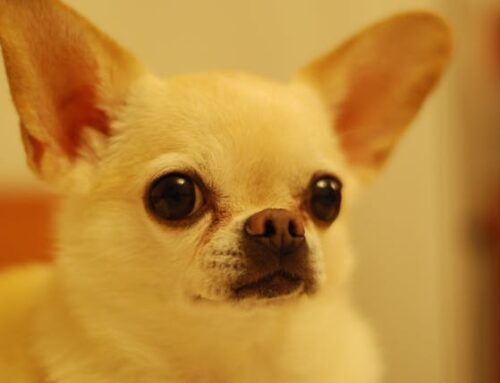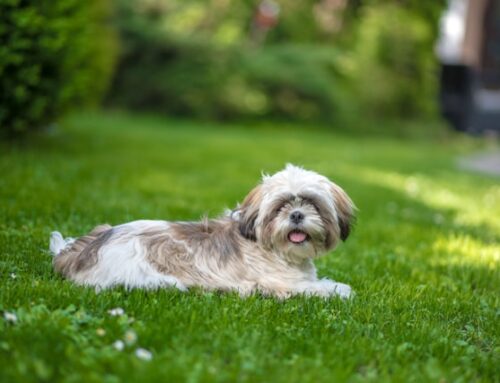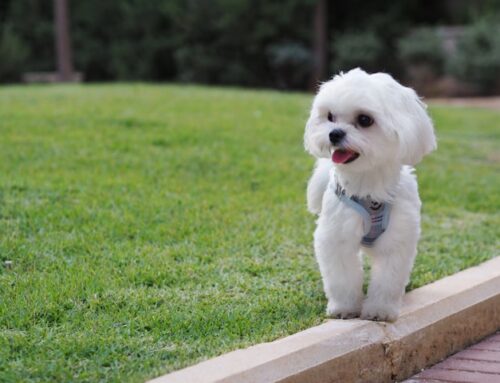Introduction: How to Discipline a Puppy

Bringing a new puppy into your home can be an exciting and joyful experience. However, along with the cuddles and playtime, there comes the crucial task of teaching your furry friend good behavior. Proper discipline is key to raising a well-behaved and happy pup, but it can be challenging to know where to start.
In this guide, we’ll explore how to discipline a puppy using effective and humane methods, helping you lay the foundation for a strong bond and a lifetime of positive behavior.
Understanding Puppy Behavior
Understanding your puppy’s behavior is the first step in effective discipline. Puppies are like young children, learning about the world around them through exploration and play.
They often misbehave due to curiosity, boredom, or a lack of understanding of what is expected. By observing your puppy’s body language and reactions, you can gain insight into their needs and address any behavior issues with patience and understanding. Positive reinforcement for good behavior and redirection for unwanted behavior are key strategies in guiding your puppy towards appropriate behavior.
Importance of Positive Discipline
Positive discipline is crucial when training your puppy, as it focuses on rewarding good behavior rather than punishing bad behavior. This approach helps to build a strong bond between you and your puppy based on trust and respect.
Positive reinforcement, such as treats, praise, and playtime, motivates your puppy to repeat desirable behaviors. It also helps to create a happy and stress-free environment for your puppy to learn and grow.

Preparing for Puppy Discipline
Establishing a Routine
Preparing for disciplining your puppy begins with establishing a consistent routine. Puppies thrive on structure, so setting regular mealtimes, potty breaks, and play sessions can help prevent unwanted behaviors.
A consistent routine also helps your puppy learn what is expected of them and reduces confusion. By incorporating training sessions into your daily routine, you can effectively teach your puppy good behavior and reinforce positive habits.
Creating a Safe Environment
Preparing for disciplining your puppy involves creating a safe environment. Remove any potential hazards and provide appropriate toys for chewing to redirect their behavior. Use baby gates or crates to limit access to certain areas until they learn boundaries. A safe environment helps prevent unwanted behavior and sets the stage for effective discipline.
Selecting Appropriate Discipline Methods
Preparing to discipline your puppy involves selecting appropriate methods. Positive reinforcement, such as treats and praise, is effective for reinforcing good behavior. Redirecting your puppy’s attention from undesirable behaviors to acceptable alternatives can also be helpful. Consistency is key in applying these methods to effectively discipline your puppy.
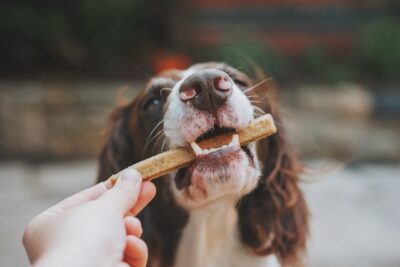
Positive Reinforcement Techniques
Using Treats and Rewards
Positive reinforcement is a powerful tool in disciplining your puppy, and using treats and rewards is a popular technique. When your puppy exhibits desirable behavior, such as obeying a command or using the bathroom outside, immediately reward them with a treat and praise.
This helps your puppy associate the behavior with a positive outcome and encourages them to repeat it. Consistency and timing are crucial in using treats and rewards effectively to discipline your puppy.
Clicker Training
Clicker training is a popular positive reinforcement technique used to discipline puppies. It involves using a clicker—a small, handheld device that makes a clicking sound—to mark the desired behavior. When your puppy performs the desired behavior, such as sitting or staying, you immediately click the clicker and reward them with a treat.
This method helps your puppy understand which behaviors are correct and reinforces them effectively. Consistency and patience are key when using clicker training to discipline your puppy.
Verbal Praise and Affection
Verbal praise and affection are powerful tools in disciplining your puppy using positive reinforcement. When your puppy exhibits good behavior, such as following a command or behaving calmly, praise them enthusiastically and give them affectionate attention.
This positive reinforcement helps your puppy understand what behavior is desired and encourages them to repeat it. Consistency in using verbal praise and affection is key to effectively discipline your puppy.
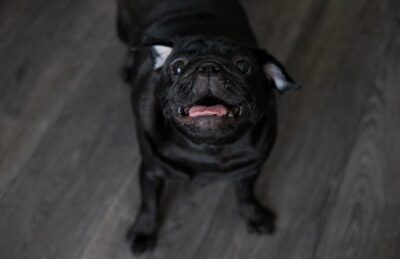
Redirecting Unwanted Behavior
Identifying Common Puppy Behaviors
Redirecting unwanted behavior in puppies involves understanding common puppy behaviors such as chewing, biting, and jumping. Puppies often exhibit these behaviors as a natural part of their development and exploration.
Redirecting their attention to appropriate toys or activities can help discourage unwanted behaviors. Consistent training and positive reinforcement are key to teaching puppies what is acceptable behavior.
Redirecting with Toys and Activities
Redirecting unwanted behavior in puppies can be effectively done by redirecting their attention to toys and activities. When a puppy engages in undesirable behavior like chewing furniture, redirecting them to a chew toy can help satisfy their need to chew.
Interactive toys, such as puzzle toys or balls, can also redirect their energy and focus. Consistency is key; praise and reward the puppy when they choose the appropriate toy or activity, reinforcing the desired behavior.
Consistency in Correction
Consistency in correction is crucial when redirecting unwanted behavior in puppies. Establishing clear rules and consistently enforcing them helps puppies understand what is expected of them. Use the same command or correction every time the behavior occurs to avoid confusion.
Consistency also applies to everyone in the household; all family members should follow the same rules and use the same commands to prevent mixed signals for the puppy.
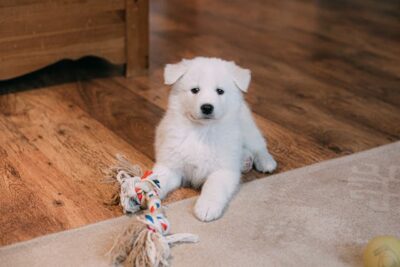
Time-Out and Ignoring Techniques
Understanding Time-Out for Puppies
Understanding time-out for puppies involves providing them with a brief period of isolation to discourage unwanted behaviors. When a puppy engages in undesirable behavior, such as biting or excessive barking, calmly and gently place them in a designated time-out area, such as a crate or a quiet room. The time-out should last only a few minutes, as puppies have short attention spans.
After the time-out, reintroduce the puppy to the environment and redirect their attention to a positive activity. Consistency is key to effectively using time-out as a training technique for puppies.
Ignoring Attention-Seeking Behaviors
Ignoring attention-seeking behaviors is an effective technique for discouraging such behaviors in puppies. When a puppy seeks attention through jumping, barking, or whining, it’s important to withhold any reaction, including eye contact, speaking, or touching. Ignoring the behavior teaches the puppy that these actions do not result in attention or rewards.
Once the puppy has calmed down and is exhibiting desired behavior, such as sitting calmly, you can then reward them with attention or a treat. Consistency and patience are key to successfully using this technique.
Implementing Time-Out Effectively
Implementing time-out effectively involves providing clear cues to the puppy when their behavior is unacceptable. Use a firm but calm voice to say “no” and immediately remove the puppy from the situation to a designated time-out area. The time-out area should be a quiet place where the puppy can calm down and reflect on their behavior.
After a few minutes, calmly return the puppy to the original location and resume normal activities. Consistency and timing are crucial for the effectiveness of this technique.

Avoiding Punishment
Negative Effects of Punishment
Avoiding punishment in puppy training is crucial as it can have detrimental effects on their behavior and well-being. Punishment, such as yelling or physical discipline, can lead to fear, anxiety, and aggression in puppies.
It can also damage the trust and bond between the puppy and the owner. Instead of punishment, positive reinforcement techniques should be used to encourage desired behaviors in puppies.
Alternative Methods for Behavior Correction
Alternative methods for behavior correction in puppies include using positive reinforcement, redirection, and training techniques. Positive reinforcement involves rewarding good behavior with treats, praise, or toys, which encourages the puppy to repeat the behavior.
Redirection involves redirecting the puppy’s attention to a more appropriate behavior or activity when they exhibit unwanted behavior. Training techniques such as clicker training or obedience classes can also help correct behavior issues without the need for punishment.
Importance of Patience and Understanding
Patience and understanding are crucial when avoiding punishment in puppy training. Puppies are learning and exploring their world, and it’s important to give them time to understand what is expected of them.
Using punishment can be confusing and frightening for puppies, leading to further behavior problems. By being patient and understanding, you can build a strong bond with your puppy and help them learn in a positive and effective way.
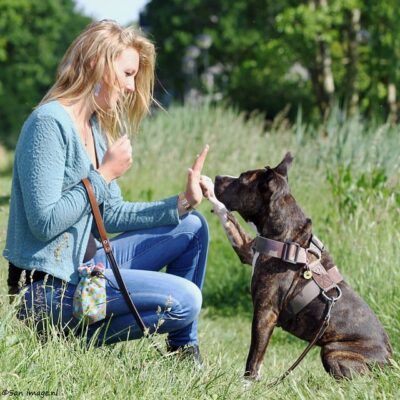
Consistency and Patience in Training
Establishing Clear Boundaries
Consistency and patience are key when training a puppy, especially when establishing clear boundaries. Set clear rules from the beginning and consistently enforce them to help the puppy understand what is expected.
Patience is essential as puppies may take time to learn and adjust to new rules. By remaining consistent and patient, you can help your puppy develop good habits and behaviors for the long term.
Practicing Regular Training Sessions
Practicing regular training sessions with your puppy is essential for reinforcing desired behaviors. Consistency in training helps your puppy understand and retain the commands you are teaching them.
Patience is key during these sessions, as puppies may not always learn quickly. By practicing regularly and being patient, you can help your puppy learn and improve their behavior over time.
Being Patient with Progress
Being patient with your puppy’s progress is crucial during training. Puppies learn at their own pace, so it’s important not to rush or become frustrated if they don’t grasp a command immediately.
Consistent practice and positive reinforcement will help reinforce desired behaviors over time. Celebrate small successes and be patient with setbacks, as each puppy learns differently.
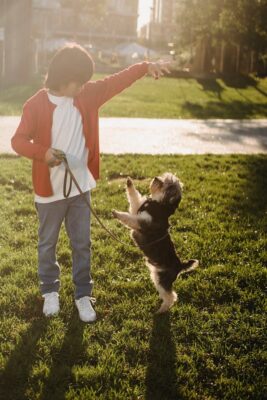
Socialization and Behavioral Training
Exposing Puppy to Various Environments
Socialization and behavioral training involve exposing your puppy to various environments, people, and animals from a young age. This exposure helps them become well-adjusted and confident adults.
Gradually introduce your puppy to new experiences, starting with calm and familiar environments and progressing to busier places with more distractions. Positive reinforcement during these experiences can help your puppy associate new environments with positive feelings.
Encouraging Positive Interaction with People and Animals
Encouraging positive interaction with people and animals is key to effective socialization and behavioral training for your puppy. Allow your puppy to meet and interact with a variety of friendly people and animals in a safe environment.
Use treats and praise to reinforce calm and friendly behavior during these interactions. Positive experiences early in life can help your puppy develop into a well-socialized and confident adult dog.
Professional Training Classes and Resources
Professional training classes and resources can be valuable tools for socialization and behavioral training for your puppy. These classes provide structured environments where puppies can learn basic obedience and interact with other dogs under the guidance of experienced trainers.
Additionally, trainers can offer advice and techniques for addressing specific behavioral issues. Supplementing these classes with at-home training and socialization efforts can help your puppy develop into a well-mannered and well-adjusted adult dog.

Addressing Specific Behavioral Issues
Chewing and Biting
Addressing chewing and biting behaviors in your puppy requires patience and consistent training. Provide your puppy with appropriate chew toys to redirect their chewing behavior.
When your puppy bites, yelp in a high-pitched voice to mimic the sound of a sibling, then ignore them for a few seconds to discourage the behavior. Consistency is key, and with time and reinforcement, your puppy will learn what is acceptable behavior.
Excessive Barking
Addressing excessive barking in your puppy involves identifying the cause of the barking. It could be due to boredom, fear, attention-seeking, or territorial behavior. Once you understand the reason behind the barking, you can address it appropriately.
For example, providing mental and physical stimulation, such as interactive toys and regular exercise, can help reduce boredom-related barking. Consistency in training and using positive reinforcement techniques can also be effective in teaching your puppy when it is appropriate to bark.
Jumping Up
Addressing jumping up behavior in your puppy requires consistent training and redirection. When your puppy jumps up, turn away and ignore them until they have all four paws on the ground. Then, reward them with praise and attention.
Consistently reinforcing this behavior will help your puppy learn that jumping up is not acceptable and that calm behavior is rewarded. Providing alternative behaviors, such as sitting, and rewarding those behaviors can also help redirect your puppy’s energy in a positive way.

Understanding Puppy Body Language
Recognizing Signs of Stress or Anxiety
Understanding your puppy’s body language is crucial for recognizing signs of stress or anxiety. Common signs include panting, trembling, yawning, and avoiding eye contact. Your puppy may also exhibit behaviors like hiding, excessive licking, or pacing.
If you notice these signs, it’s important to address the cause of stress or anxiety and provide comfort and reassurance to your puppy. Working with a professional trainer or behaviorist can help you understand your puppy’s cues and develop strategies to reduce their stress.
Interpreting Playful Behavior vs. Aggression
Understanding your puppy’s body language is key to differentiating between playful behavior and aggression. Playful behavior often includes a relaxed body posture, wagging tail, and play bows. They may also make playful barks or growls that are typically higher-pitched.
In contrast, aggressive behavior is characterized by stiff body posture, raised fur, direct eye contact, and low growling or snarling. If you’re unsure about your puppy’s behavior, consult with a professional trainer or behaviorist for guidance.
Importance of Observing and Responding Appropriately
Observing and responding appropriately to your puppy’s body language is crucial for their well-being and your relationship. By paying attention to subtle cues, such as ear position, tail wagging, and body posture, you can better understand your puppy’s emotions and needs.
Responding calmly and positively to your puppy’s signals helps build trust and strengthens your bond. Additionally, it can prevent misunderstandings and potential conflicts, leading to a more harmonious relationship.
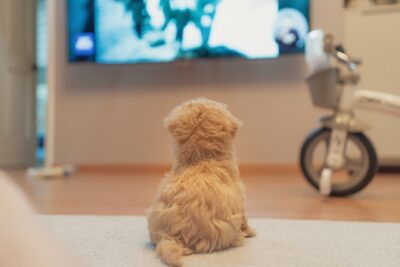
Supervision and Monitoring
Keeping a Close Eye on Your Puppy
Keeping a close eye on your puppy is essential for their safety and well-being. Puppies are curious and can get into mischief if left unsupervised. Supervision allows you to intervene and redirect their behavior when necessary.
It also helps you monitor their health, ensure they are eating and drinking properly, and identify any potential issues early on. Regular supervision is key to raising a well-behaved and healthy puppy.
Supervising Interactions with Children and Other Pets
Supervising interactions between your puppy, children, and other pets is important to ensure everyone’s safety and well-being. Teach children how to properly handle and interact with the puppy, including gentle petting and appropriate play.
Always monitor their interactions and intervene if necessary to prevent any rough behavior or accidental harm. Similarly, supervise interactions between your puppy and other pets to ensure they are getting along and to prevent any aggressive behavior.
Using Baby Gates and Crates for Safety
Using baby gates and crates can help ensure the safety of your puppy when you cannot directly supervise them. Baby gates can be used to block off areas of the house that are not puppy-proofed, while crates provide a safe and secure environment for your puppy when you are unable to watch them.
Crates can also be used as a tool for house training and preventing destructive behavior when you are away. When using these tools, it’s important to ensure that your puppy has enough space, comfort, and access to food and water.
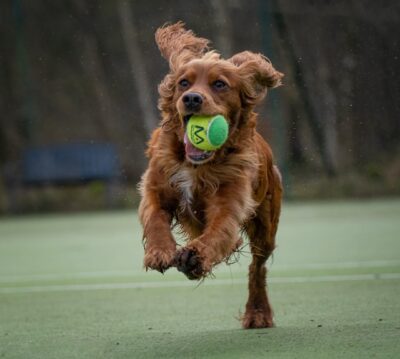
Exercise and Mental Stimulation
Providing Sufficient Physical Activity
Providing sufficient physical activity is crucial for your puppy’s health and well-being. Puppies have lots of energy and need regular exercise to stay healthy and prevent boredom.
Aim for at least 30 minutes to an hour of exercise each day, depending on your puppy’s age and breed. Activities such as walking, running, playing fetch, and interactive games can help keep your puppy physically fit and mentally stimulated.
Engaging in Interactive Play
Engaging in interactive play is an excellent way to provide both physical exercise and mental stimulation for your puppy. Interactive toys, such as puzzle toys or balls, can keep your puppy entertained and engaged.
Playing games like hide-and-seek or tug-of-war can also provide mental stimulation and strengthen the bond between you and your puppy. Rotate toys regularly to keep playtime interesting and prevent boredom.
Mental Exercises to Keep Your Puppy Stimulated
Mental exercises are an important part of keeping your puppy stimulated and engaged. Teaching your puppy new tricks or commands not only provides mental stimulation but also strengthens the bond between you.
Interactive feeding toys or puzzle games can also challenge your puppy’s mind and prevent boredom. Regularly rotating toys and introducing new environments can also keep your puppy’s mind sharp and engaged.
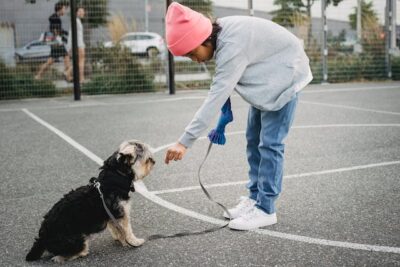
Reviewing Progress and Adjusting Strategies
Monitoring Behavior Changes
Monitoring behavior changes is essential when disciplining your puppy to ensure your strategies are effective. Keep track of any improvements or setbacks in your puppy’s behavior. If you notice that a particular method is not working, be flexible and willing to adjust your approach.
Consult with a professional trainer or behaviorist if you need guidance on alternative strategies. Consistency and patience are key to successfully disciplining your puppy.
Seeking Professional Advice if Necessary
Seeking professional advice is important if you’re struggling to discipline your puppy effectively. A professional trainer or behaviorist can assess your puppy’s behavior and provide tailored advice and techniques.
They can also help you understand why certain behaviors are occurring and how to address them appropriately. Don’t hesitate to seek help if you feel overwhelmed or unsure about how to discipline your puppy.
Modifying Training Techniques as Your Puppy Grows
As your puppy grows and develops, it’s important to modify your training techniques to suit their changing needs. What worked when your puppy was younger may not be as effective as they get older. Be flexible and willing to adjust your approach based on your puppy’s age, breed, and temperament.
Continue to review your progress regularly and make changes as necessary to ensure your puppy receives the most effective and appropriate discipline.
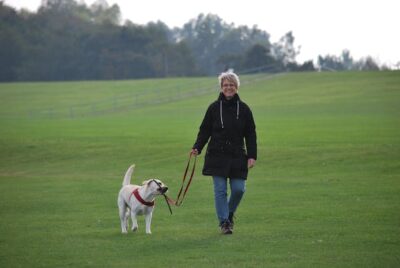
Conclusion: How To Discipline a Puppy
Recap of Key Points: How To Discipline a Puppy
Disciplining a puppy involves understanding their behavior, using positive reinforcement, and providing consistent training. It’s crucial to establish clear boundaries and redirect unwanted behaviors effectively.
Creating a safe environment, practicing patience, and seeking professional advice when needed are key to successful discipline.
Emphasizing the Importance of Positive Discipline
Positive discipline focuses on rewarding good behavior rather than punishing bad behavior. This approach helps build a strong bond between you and your puppy based on trust and respect.
Using treats, praise, and playtime as rewards motivates your puppy to repeat desirable behaviors and creates a happy learning environment.
Final Tips for Successful Puppy Training
For successful puppy training, maintain consistency and patience as your puppy learns at their own pace. Use a variety of positive reinforcement techniques, such as treats, praise, and play, to keep training sessions engaging and effective. Monitor your puppy’s behavior closely, and be ready to adjust your training methods as needed.
Providing ample physical exercise and mental stimulation will help keep your puppy healthy and happy. Remember, discipline should always be gentle and positive to build a lifelong bond of trust with your puppy. If you’re wondering how to discipline a puppy, remember to use gentle and positive methods to correct their behavior.
If you’re looking for puppies in Georgia and surrounding areas, check out our list of available puppies. Our puppies are thoughtfully bred from reputable breeders.
Frequently Asked Questions: How to Discipline a Puppy
- Q: How to discipline a puppy?
- A: Discipline should be based on positive reinforcement, such as rewarding good behavior with treats and praise. Redirect your puppy’s behavior when they misbehave and avoid punishment that could scare or harm them. Consistency and patience are key to effective discipline. If you’re struggling, seek advice from a professional dog trainer.
- Q: What should I do if my puppy misbehaves?
- A: Redirect their attention to a more appropriate behavior, such as giving them a toy to chew on instead of furniture. Consistency and patience are key.
- Q: Is it okay to use physical punishment?
- A: No, physical punishment can harm your puppy and damage your bond. Positive reinforcement is more effective and builds a trusting relationship.
- Q: How can I prevent bad behavior in my puppy?
- A: Provide plenty of exercise, mental stimulation, and training. Supervise them closely and redirect their behavior when necessary.
- Q: What if my puppy doesn’t respond to training?
- A: Be patient and consistent. Some puppies may take longer to learn, so continue using positive reinforcement and seek professional help if needed.

